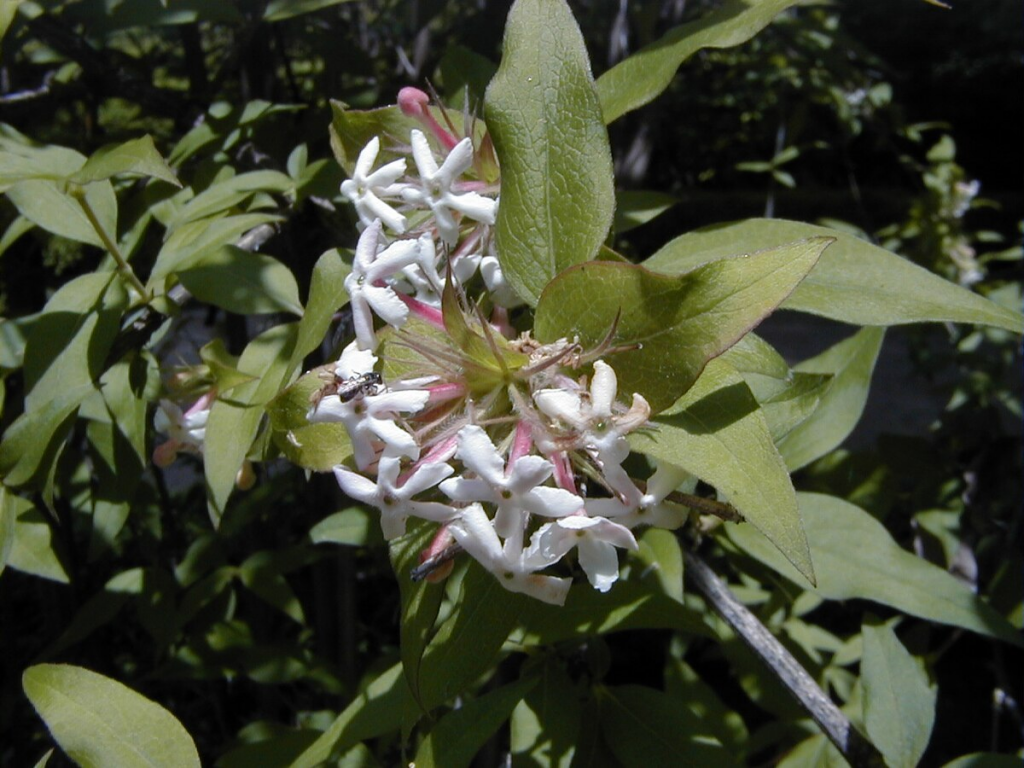
Also called Himalayan abelia, this evergreen to deciduous shrub is a member of the honeysuckle family, Caprifoliaceae, that also includes weigela, pincushion flower and teasel. It is native to eastern Asia and N.W. Himalayas, where it can be found in calcareous soils in dry scrub, rocky slopes, and grasslands. The plant grows up to 12′ tall, but is usually about 6′, is highly branched, and has shoots with stiff curved hairs . The dull green leaves are oval to lanceolate, about 2″ long, and have pointed tips. In summer, terminal clusters of trumpet-shaped flowers appear. The flowers have 5 white to pinkish petals and are small but have a very desirable vanilla fragrance that attracts pollinators. Indian abelia can be grown in a container, and is a good choice for a patio plant, hedge, screen as well as in butterfly, hummingbird, pollinator and fragrance gardens. The genus name, Abelia, honors Dr. Clarke Abel (17801826), English naturalist and physician who was part of a British delegation to the emperor of China in 1816. The specific epithet, triflora, comes from the Latin words tres meaning three and flos meaning flower, and refers to the fact that the flowers often appear in clusters of three.
Type: Flowering broadleaf evergreen to deciduous shrub
Outstanding Feature: Fragrance of flowers
Form: Upright with arching branches
Growth Rate: Slow to moderate
Bloom: Terminal clusters of trumpet-shaped white to pinkish flowers in summer
Size: 6-12′ H x 9′ W
Light: Full sun for best flowering; tolerates some shade
Soil: Fertile to average, consistently moist, well-drained
Hardiness: Zones 6-9
Care: Prune immediately after flowering to maintain shape
Pests and Diseases: Generally healthy but may suffer from damage by aphids, spider mites, anthracnose, and powdery mildew.
Propagation: Seed, softwood cuttings in early summer, semi-hardwood cuttings in late summer
Photo Credit: A. Barra Wikimedia Commons